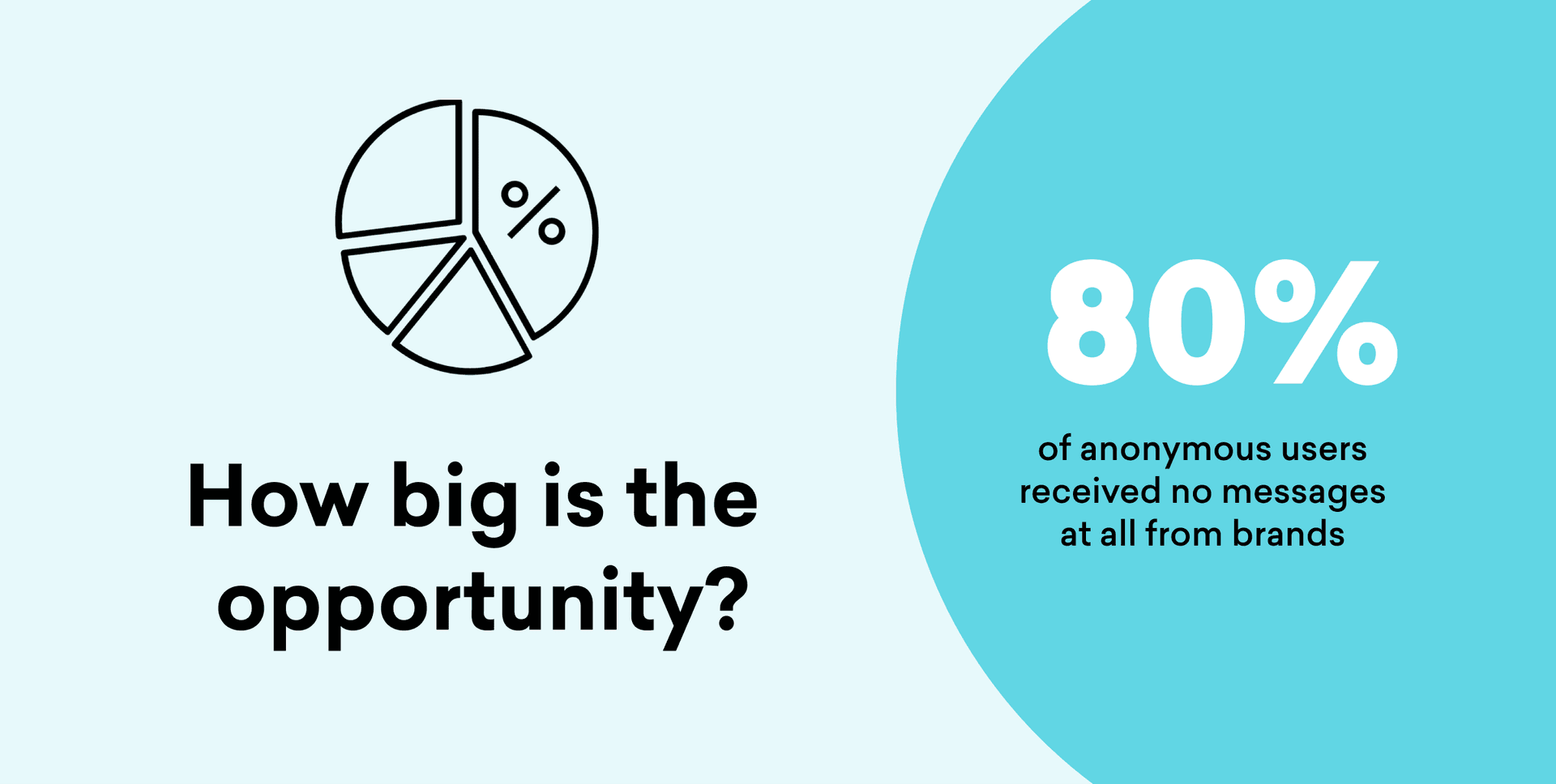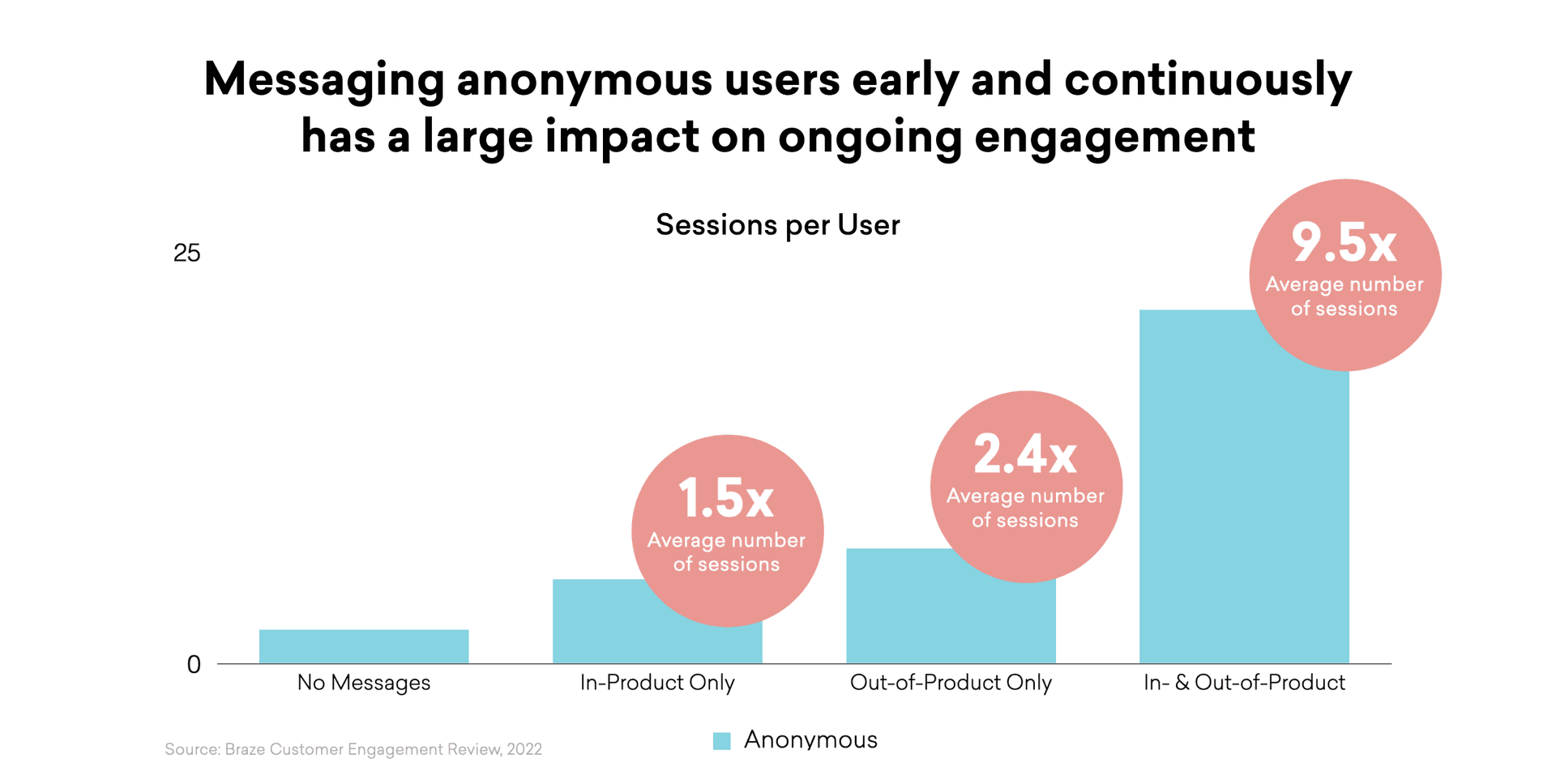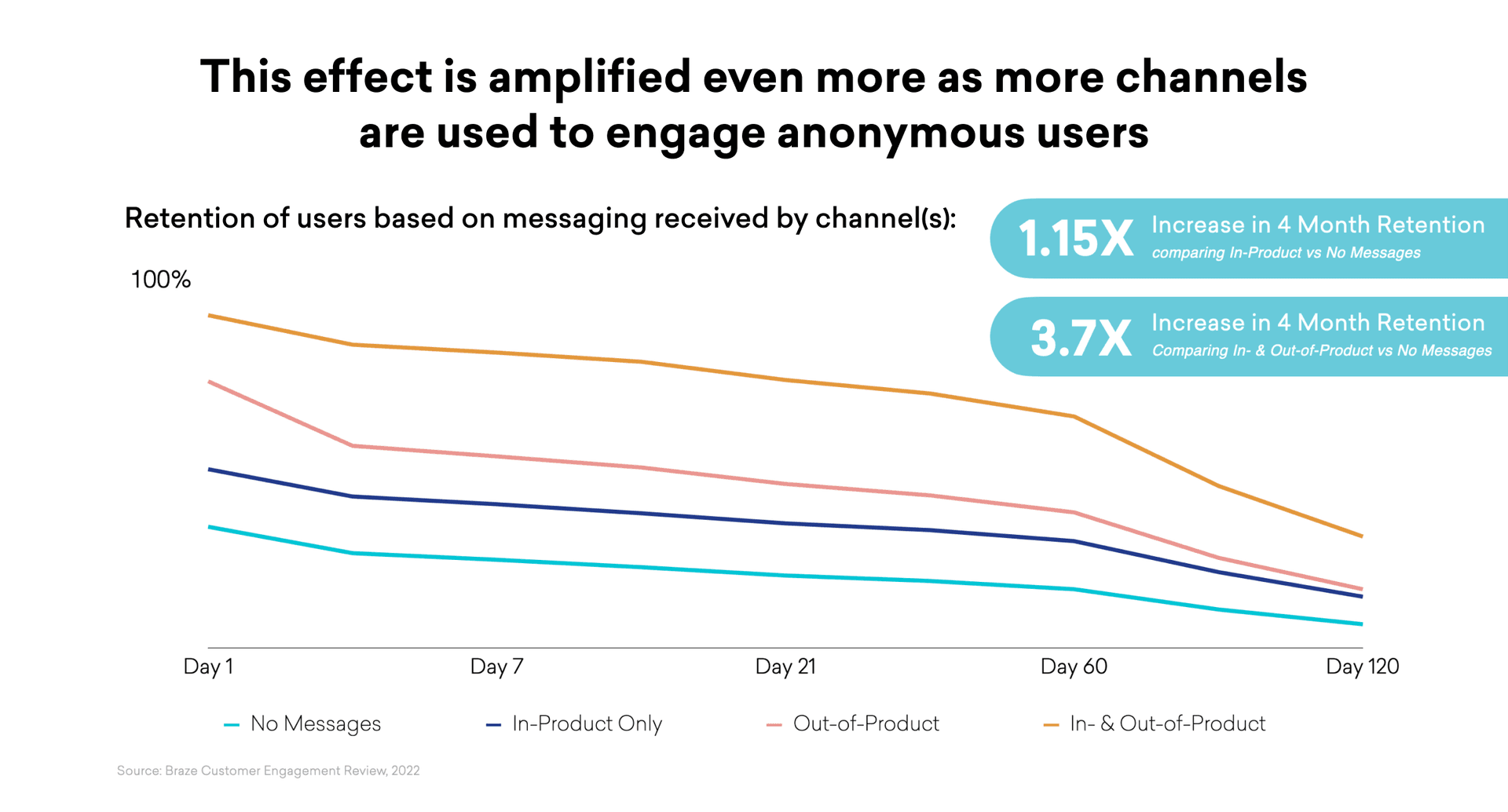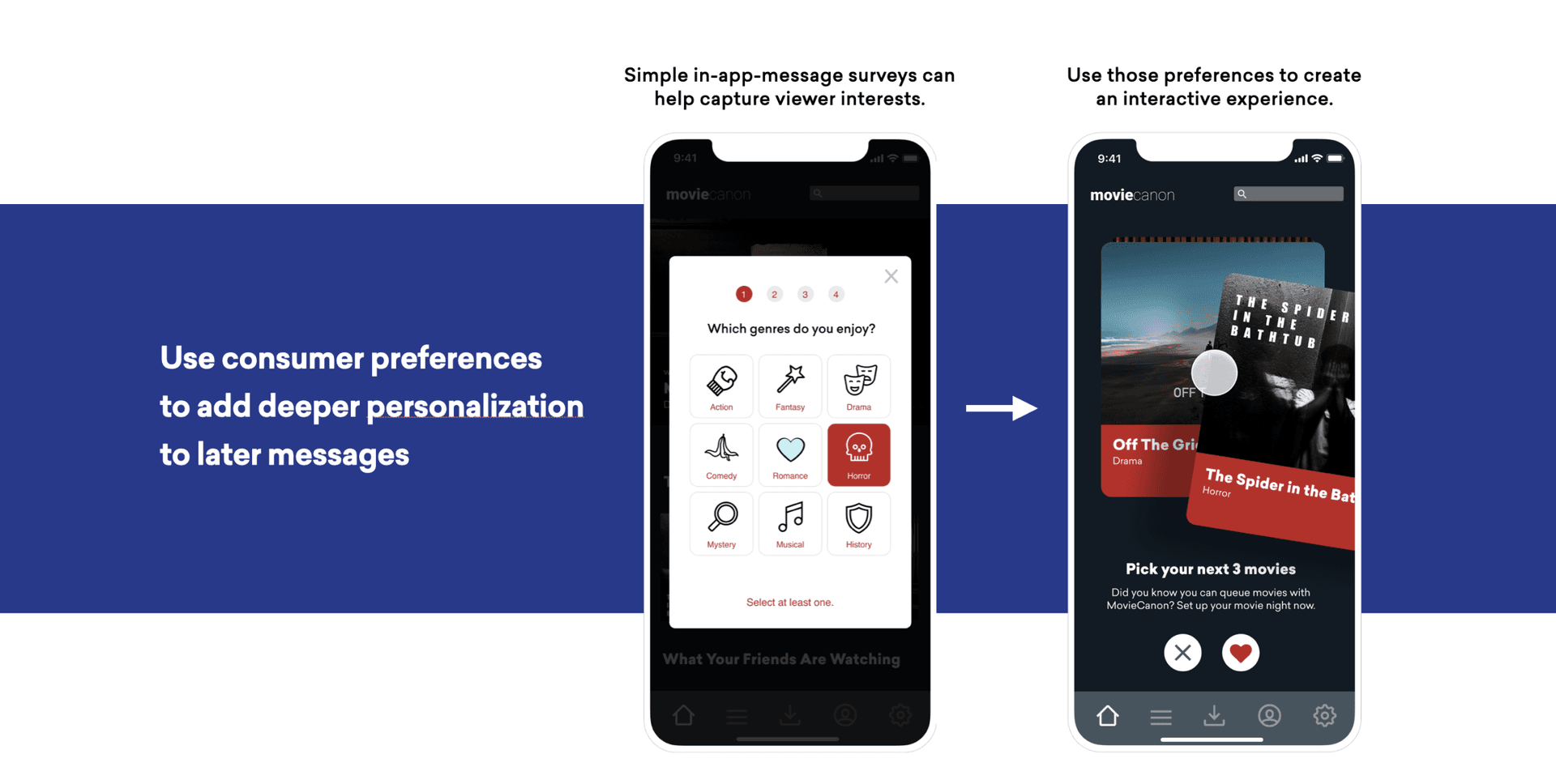From Unknown to Known: Personalization for Anonymous Users
Published on January 30, 2023/Last edited on January 30, 2023/4 min read


Mary Kearl
WriterAnonymous users, you know them. Well, actually you don’t…but you can. Anonymous users are individuals who take action on your digital properties, but do not—for one reason or another—choose to create an account or log in. Often, they’re users who choose to “continue as a guest” when that option is available.
Figuring out how to identify and personalize the experience for anonymous users is a competitive advantage for brands, but most companies aren’t taking advantage of it.
Now Is the Time to Identify Your Anonymous Users and Personalize Their Experience
In 2021, Braze conducted a study of 1,000+ companies and over 5 billion users and found that 57% of new users for these brands were anonymous users and, of those new users, 80% never received any marketing messaging campaigns (such as email marketing messages or push notifications) from brands.

In the wake of Google’s announcement that it plans to discontinue the use of third-party cookies and Apple’s debut of new privacy features, brands are recognizing the need to invest in zero- and first-party data strategies to better understand who their users are.
As part of our annual market research study of the top trends in the customer engagement landscape, the Braze Global Customer Engagement Review, we found that more than one-third of surveyed brands (38%) plan to step up their zero- and first-party data collection methods. Zero-party data is data that your customers are explicitly sharing with your brand, such as their name and contact information when they fill out a lead capture form, while first-party data is inclusive of both this type of direct data as well as indirect data, such as a user’s browsing activity.
As brands invest more heavily in learning more about their users, collecting zero- and first-party data about their anonymous users needs to be part of that broader strategy.
What Happens When Brands Identify and Engage Anonymous Users
Brands that market to their anonymous users—leveraging both in-product and out-of-product messaging channels—can drive engagement by up to 9.5X.

Similarly, brands that take a cross-channel approach to messaging their anonymous users that includes both in-product and out-of-product channels can boost long-term retention by up to 3.7X.

What You Can Do to Identify Your Anonymous User and Personalize the Anonymous User Experience
- Use what you do know about your anonymous users to personalize the experience. You might not know their name, but you should have other information, such as their app and website browsing activity, and session timezone, that you can use to personalize their experience.
- Leverage in-app messaging and in-browser messaging to collect more insights. Before asking anonymous users to create an account, deploy messages in your app or on your website that ask visitors about their interests.
- Use these insights to personalize future messaging and experiences within your app and website.
- Take a cross-channel approach to encourage anonymous users to complete the account sign-up process—this tactic can help brands boost registrations by 15X, according to Braze insights.

Get even more ideas for how your brand can identify your anonymous users and personalize their experience with these six anonymous user campaigns designed to activate, retain, and monetize your unknown users.
Methodology
For this analysis, Braze pulled anonymized and aggregated behavioral data from over 795 brands across its US, APAC, and EU clusters to analyze app activity, message engagement, and purchasing trends by industry. These statistics span January 1–December 31, 2021 and include data from over 5.4 billion user profiles and 52 sub-industries. The raw data has been cleaned using volume and company count checks so that no one brand or group of brands is over-represented. For all purchase- and messaging-related stats, only brands tracking the relevant information have been included so as not to skew the analysis. All uplift figures greater than 100% are rounded to the nearest decimal point, and all uplift figures below 100% are rounded to the nearest whole percent. When comparing two rounded numbers, percent change metrics are calculated as the difference between the two numbers after rounding.
Related Tags
Be Absolutely Engaging.™
Sign up for regular updates from Braze.
Related Content
View the Blog
How AI Decisioning Transforms Marketing (A Complete Guide)

Team Braze

AI decisioning cheat sheet: How to crawl/walk/run with BrazeAI Decisioning Studioᵀᴹ

Team Braze

A day in the life of a data scientist on the BrazeAIᵀᴹ forward-deployed engineering team
